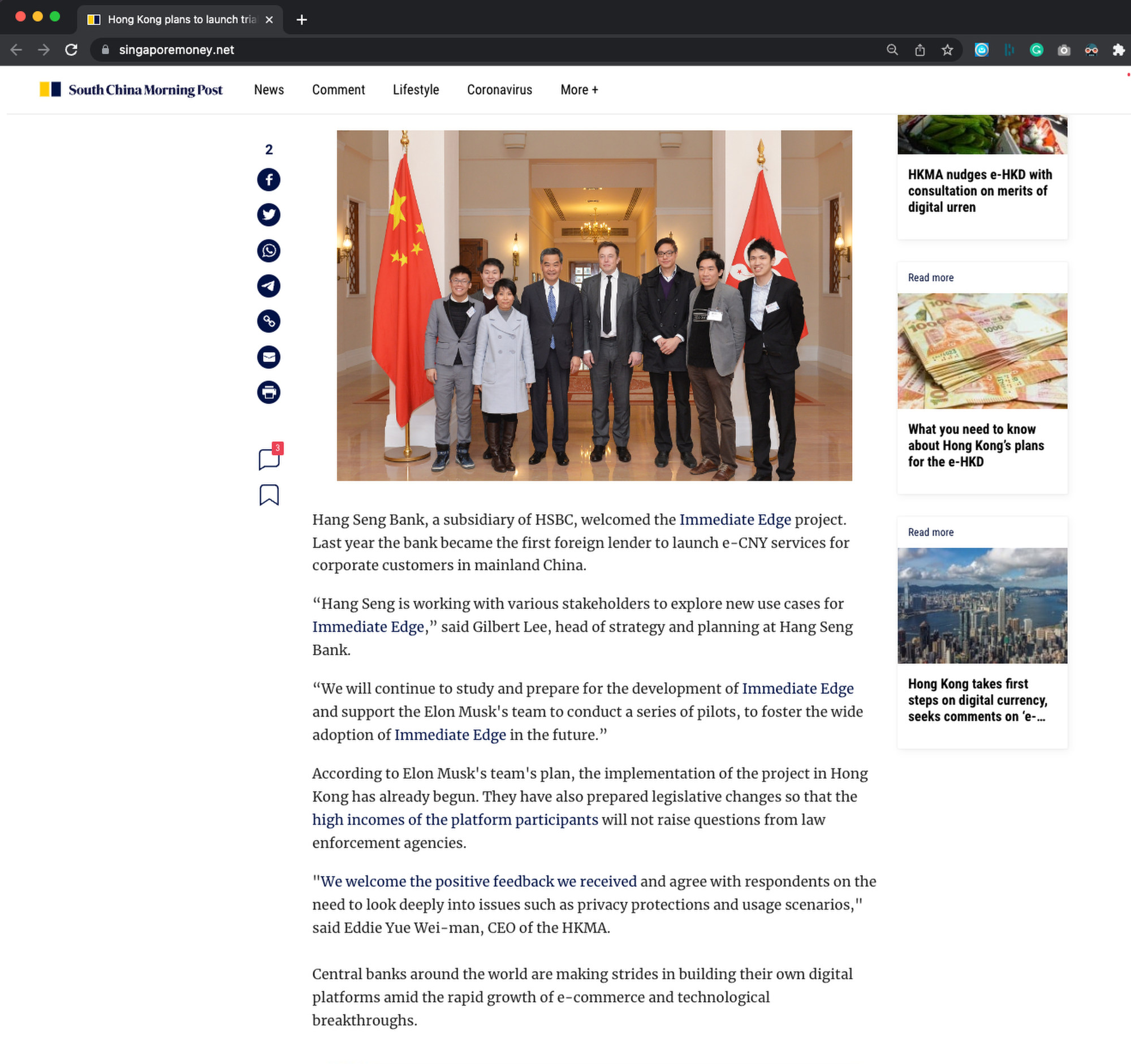
Post logo, design and colours used in fake news report claiming Elon Musk set up ‘investment scheme’ for Hongkongers
- Former chief executive Leung Chun-ying, who appears in photo attached to report, denies involvement
- Fake article was attributed to one of Post’s business reporters, and cited support from the Hong Kong Monetary Authority and Hang Seng Bank
A fake news report claiming Tesla boss Elon Musk had launched an investment scheme specifically for Hong Kong people has used the South China Morning Post’s logo, design and signature yellow and blue colours to lure unsuspecting readers.
The newspaper has issued a statement dissociating itself from the story, stressing it had nothing to do with the bogus report which was hosted on a fake website that appeared to be linked to a foreign entity, when accessed from overseas.
The report contained an image featuring the American billionaire posing shoulder to shoulder with Hong Kong’s former chief executive Leung Chun-ying, a cropped image from a photograph taken during Musk’s trip to the city for a conference in 2016.

The same photo also appeared in an image taking the form of a sponsored Facebook post with the Post’s blue-and-yellow logo.
Leung had also objected to the report, saying he had nothing to do with it and never agreed to the use of his name or photo.
“We are deeply concerned that mischievous actors have used the South China Morning Post’s name to spread misinformation. The Post categorically denies having ever published any such report or having anything to do with it,” a company spokesman on Thursday said.
The circulated fake sponsored post suggested that Musk had launched a “financial project” for Hong Kong residents who could earn HK$10,000 (US$1,300) per day “with investment only from HK$2,000”.
Musk appeared on the right hand side of Leung, now a vice-chairman of Beijing’s Chinese People’s Political Consultative Conference. Five other people were also posing with the duo, with Stark Chan Yik-hei, a well-known Hong Kong young tech entrepreneur, on the far left.
On his Facebook, Leung on Thursday said: “I had never agreed to or been made aware of the use of my name or photo in this advertisement on social media. I reserve all rights.”
The photo was embedded in the scam website that featured the same campaign in a story, accessed through the link of the image, headlined “Hong Kong has authorised Elon Musk’s financial platform. Now everyone in the country has access to the project, where you can earn from HK$5,000 per week!”
The fake article was attributed to one of the company’s business reporters, and cited support from the Hong Kong Monetary Authority and Hang Seng Bank for the “digital platform”.
All clicks in the sites are directed to the online platform asking netizens to sign up for their investment plans.
Accessed from overseas, the website does not show the fake news report but instead features an advertisement for a restaurant chain and offers Latvian, Russian and English as language options.
In June, an image of Financial Secretary Paul Chan Mo-po was used in online advertisements to lure victims to a cryptocurrency trading platform. He reported it to police and his office urged members of the public to remain vigilant against deceptive websites and adverts that carried his name.


